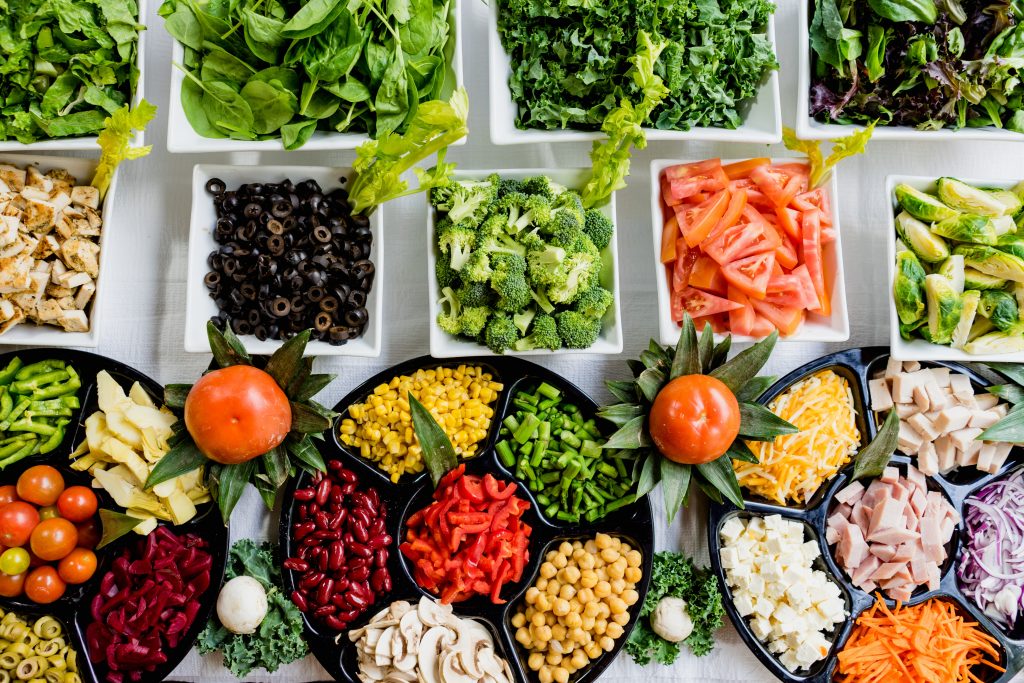
Photo by Dan Gold on Unsplash
The information in this section are obtained from the document A Feeding Families Factsheet from Canada Food Banks. The original can be downloaded here.
Planning Healthy Family Meals
Affordable and Healthy Eating for Your Family
Making meals when you have a tight budget can be tough. These meal planning and shopping tips will help you to organize and prepare healthy meals for your family. Here are three main steps to keep in mind.
- Make a plan. Organize your meals for the week ahead. This will help you and your family eat better and avoid wasting food.
- Make a weekly shopping list. Making fewer trips to the grocery store can save you time and money.
- Stock up on basics. Keep a supply of canned and dry goods in the cupboard. This will help you to pull together meals quickly, even when you can’t get to the store.
How to Make a Plan
Making a meal plan is easier than you think! If you have 10 to15 minutes at the start of the week, you can plan healthy meals for your family.
- Check what food items you already have in your kitchen and use these items to build your meal plan.
- Write down the main meals you plan to eat over the week.
- Decide which days to make each meal. Start with your busiest week nights, and make the quickest dinners on these days (see sample meal plan).
- Try to include foods from each of the four food groups each day: vegetables and fruit, grain products, milk and alternatives, and meat and alternatives. This will help you keep your family healthy.
- Look for ways to save time. For example, cook larger amounts of foods you will use in other meals this week. Extra cooked potatoes and vegetables can go into a frittata (see recipe), soup or salad. Cooked chicken can be used in sandwiches or pasta dishes. Double a recipe, and freeze what you don’t eat right away
Sample Meal Plan
This is a sample meal plan, showing some examples of healthy meals that you could serve your family. To complete this meal plan, include breakfast, snacks and any other meals that you would eat during your week. Remember to add these foods to your shopping list. In this meal plan, the colour-coded meals have common ingredients or make use of leftovers.
| Meal | DAY 1 | DAY 2 | DAY 3 | DAY 4 | DAY 5 |
|---|---|---|---|---|---|
| Lunch | Action: Take a few minutes out of your day to create your meal plan. |
|
|
|
|
| Dinner |
|
|
|
|
Action: Try to use up your left-overs or fresh ingredients to make dinner before you start a new meal plan. |
Make a shopping list from your meal plan
Use your meal plan to make a shopping list. Figure out all the ingredients you will need to make each dish. Check to see which items you have already, and add the ones you don’t have to your list.
Here is the shopping list for the sample meal plan by food type.
Frozen, Fresh or Canned Vegetables
- Broccoli
- Green peas
- Potatoes
- Garlic
- Mushrooms
- Onions
- Carrots
- Celery
- Green pepper
- Zucchini
Canned or Fresh Fruit
- Tomatoes
- Apples
- Pears
- Fruit salad
Beverages
- 100% Fruit or vegetable juice (avoid fruit drinks or fruit flavoured crystals)
Grain Products
- Bread and/or bagels, whole wheat
- Pasta shells or macaroni
- Tortillas, soft (white or whole wheat)
Meat and Alternatives
- Baked Beans, canned
- Chicken, whole or pieces
- Eggs
- Lentils, canned
- Peanut butter
- Tuna or salmon, canned
Milk and Alternatives
- Cheese, hard or grated
- Milk (skim milk powder) or alternative
- Yogurt, plain or flavoured
Basics: Spices, fats & oils and other foods
- Caesar or ranch-style salad dressing
- Cream of broccoli, mushroom or chicken soup, canned
- Spices – basil, black pepper, curry, cumin, chili powder, paprika
- Vegetable or chicken bouillon cubes or canned chicken broth
- Vegetable oil